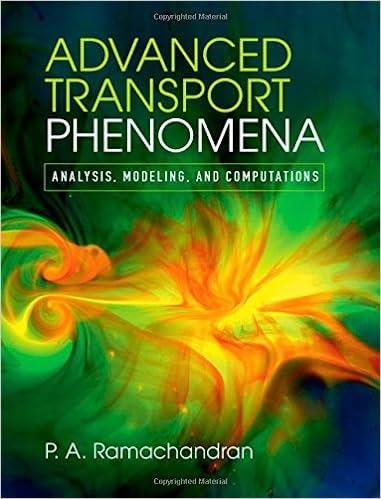Consider a porous catalyst with a series reaction represented as [mathrm{A} ightarrow mathrm{B} ightarrow mathrm{C}]
Question:
Consider a porous catalyst with a series reaction represented as
\[\mathrm{A} \rightarrow \mathrm{B} \rightarrow \mathrm{C}\]
Write governing equations for A and B. Express them in dimensionless form. How many dimensionless groups are needed?
Solve the equations for a case where the dimensionless concentrations at the catalyst surface are one and zero for A and B, respectively. Note that both concentrations are normalized with the concentration of \(\mathrm{A}\) at the surface.
Calculate the dimensionless gradient for these two species at the surface. From these expressions calculate the yield parameter defined as
\[S=-\left(d c_{\mathrm{B}} / d \xi\right) /\left(d c_{\mathrm{A}} / d \xi\right) \text { at } \xi=1\]
What is the significance of this parameter? Plot it as a function of \(\phi\). For a high selectivity to B, would you operate with a low \(\phi\) or a high \(\phi\).
Step by Step Answer:

Advanced Transport Phenomena Analysis Modeling And Computations
ISBN: 9780521762618
1st Edition
Authors: P. A. Ramachandran




